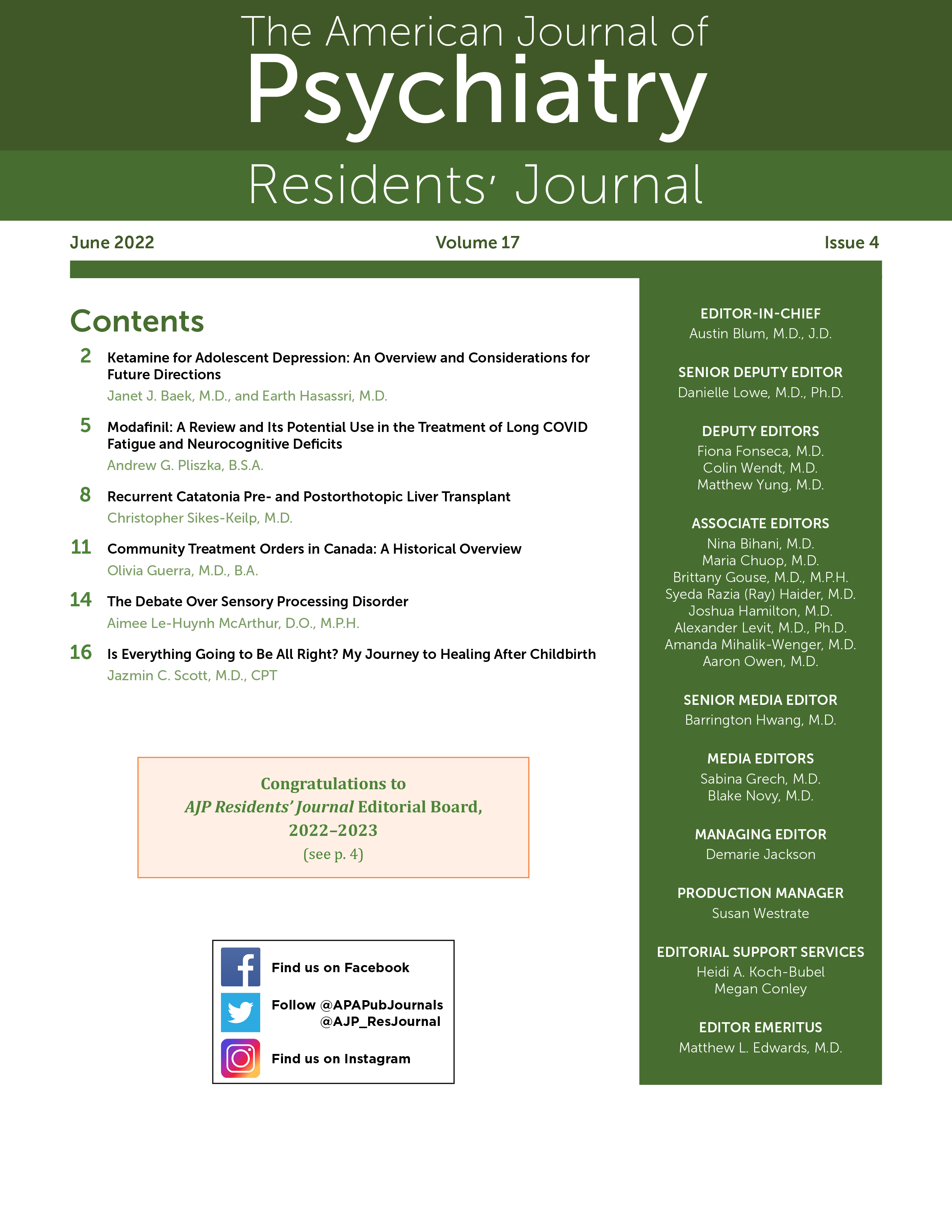The concept of sensory processing disorder (SPD) was first theorized in the 1970s by occupational therapist and psychologist Anna Jean Ayres. SPD is a condition that involves difficulties in detecting, modulating, and interpreting sensory stimuli to the extent of causing impairment in daily functioning and participation. Symptoms include abnormal reactions, such as heightened or reduced emotional, behavioral, or psychological responses to sensory stimuli at normal intensities. The prevalence of SPD among children in the United States is about 5%–16% (
1). However, SPD is not included in
DSM-5 or
ICD. Relatedly, there is debate over whether SPD should be a distinct diagnosis.
In the medical community, dysfunction in sensory processing is more commonly known as a feature of autism spectrum disorder or other developmental disorders. Children with difficulty tolerating or processing sensory information may go on to receive a diagnosis of autism spectrum disorder. Jumping to SPD could mean missing a broader developmental issue. Furthermore, sensory issues may resolve as a child matures. Labeling such issues as a disorder could mean pathologizing something too soon. In 2012, the American Academy of Pediatrics published a policy statement recommending that, generally, SPD should not be diagnosed because there is no universally accepted diagnostic framework. The position statement stressed the importance of a thorough evaluation to ensure that other developmental and behavioral disorders are considered (
2).
On the other side of the debate, SPD is distinguished as its own disorder. There are children who present with significant sensory processing deficits but who do not meet criteria for other disorders. Neuroimaging research conducted at the University of California, San Francisco (UCSF), supports the notion of SPD as its own diagnosis (
3). The investigators found that the brains of children with SPD were measurably different from those of neurotypical control subjects, specifically noting white matter abnormalities in the posterior regions involved in sensory processing (
3). In another study, this same UCSF research group compared the brains of boys with SPD with those of boys with autism spectrum disorder (
4). They found shared white matter disruption in the sensory pathways but divergent connectivity in the socioemotional pathways, indicating that SPD may exist distinctly from autism spectrum disorder. Another study comparing sensory processing characteristics of children with SPD to the characteristics of those with autism spectrum disorder found lower physiologic arousal and sensory reactivity in the autism spectrum disorder group and higher reactivity after each sensory stimulus in the SPD group (
5).
Regardless of debate over SPD as a stand-alone diagnosis, patients with this condition experience significant distress and behavioral problems. Psychiatrists may be involved as part of a comprehensive team to weigh in on treatment of these emotional and behavioral symptoms. To date, there are no pharmacological agents approved for the treatment of SPD, but off-label use of some psychiatric medications may show promise. Propranolol could help by dampening reactivity, and the pain-modulating properties of serotonin norepinephrine reuptake inhibitors may offer benefits for those with tactile sensitivities. When treating the SPD itself, sensory integration therapy, typically done by an occupational therapist, is the most established intervention. This type of therapy is designed to stimulate and challenge the senses while reinforcing functional, adaptive responses. In the 2012 American Academy of Pediatrics policy statement, the authors stated that this therapy is “acceptable as one of the components” of comprehensive treatment but that the research base for its effectiveness is “limited and inconclusive” (
2).
With the medical community still divided on how to classify SPD, patients are sometimes left lost, untreated, or grasping at treatments that may not work. In searching for a diagnosis, families may have to navigate through several specialties, including psychiatry. Regardless of the ongoing debate, psychiatrists should be aware of SPD and be prepared to address associated emotional and behavioral symptoms, while ensuring that other disorders are carefully ruled out.
